Corpus of the Inscriptions of Campā

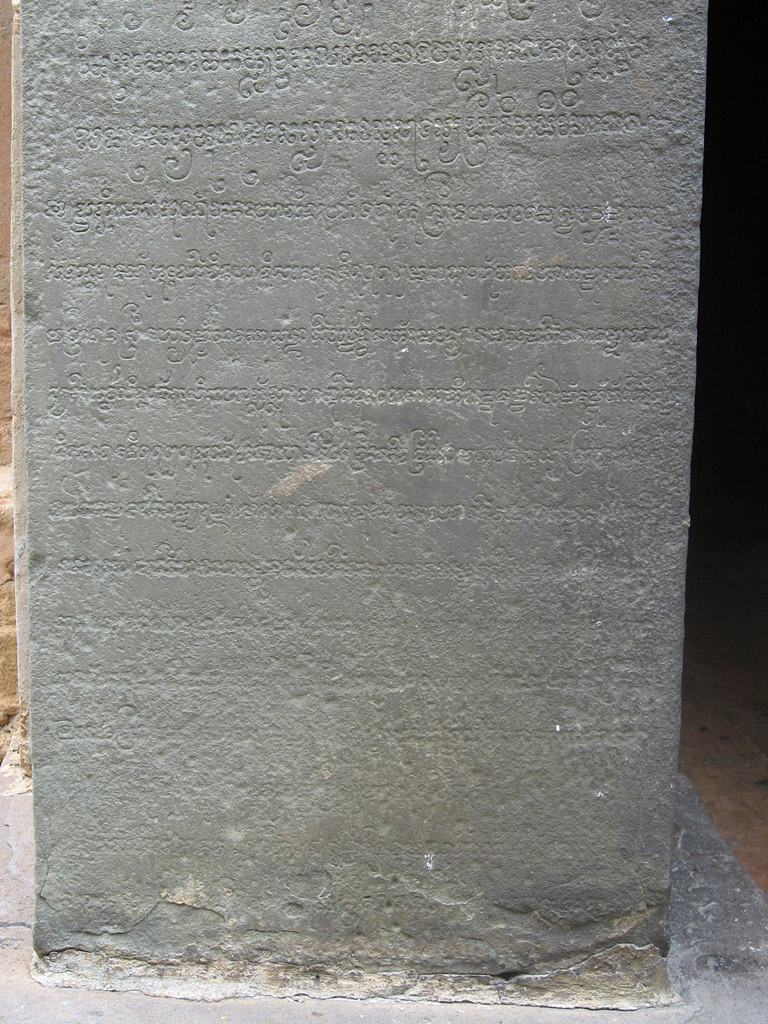
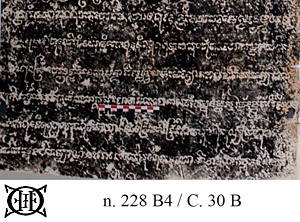
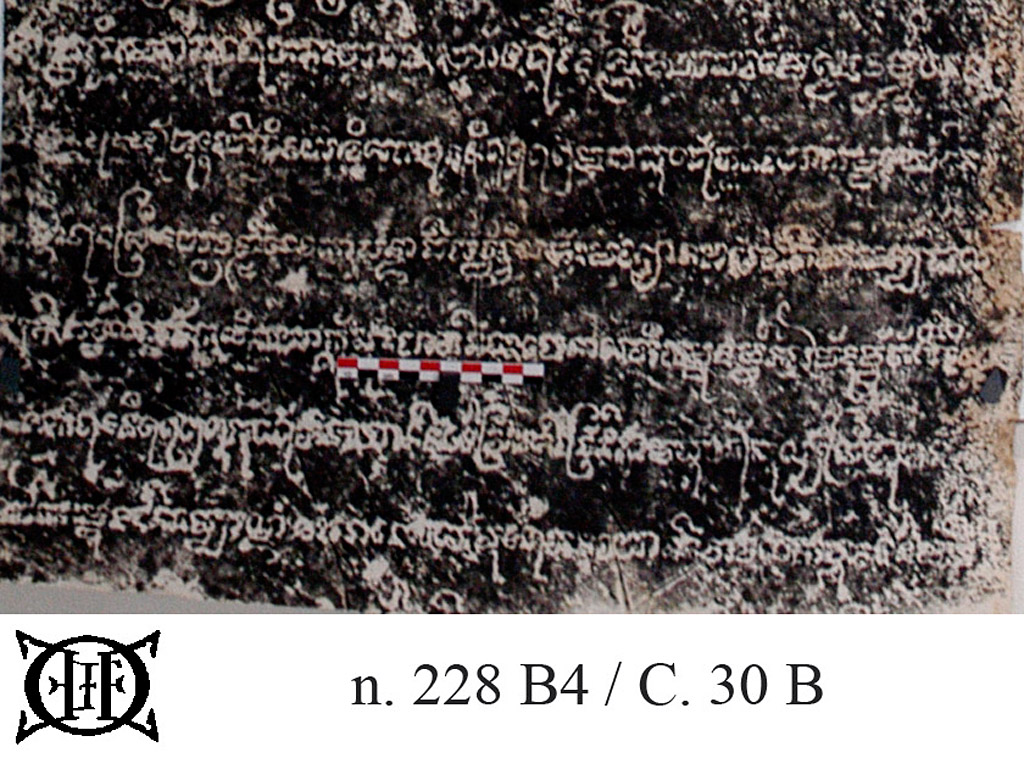
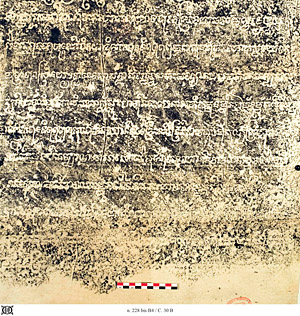
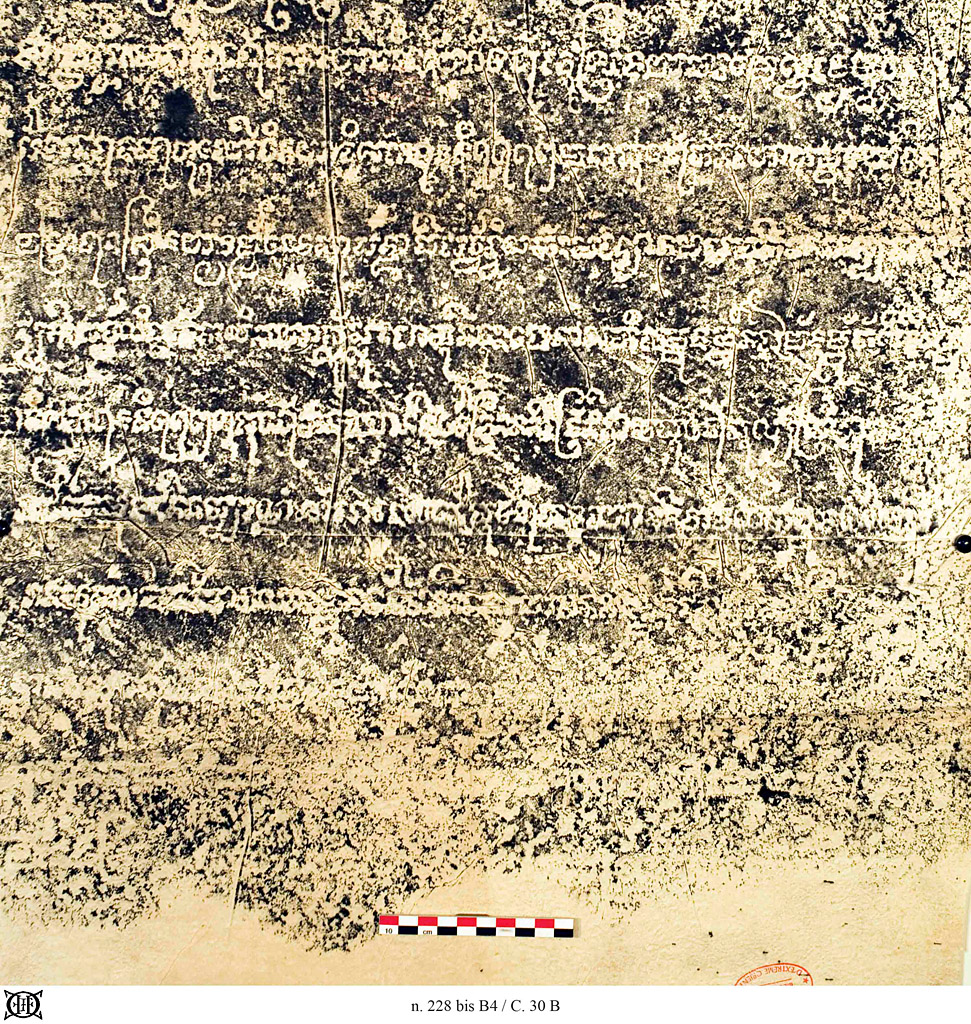
C. 30 B4 Southern doorjamb of the main shrine of Po Nagar
Please note: you are reviewing a preprint version of this publication. Contents here may change significantly in future versions. Scholars with specific interests are urged to consult all cited bibliography before using our texts and translations or drawing other significant conclusions.
Text The twelve last lines engraved on the anterior face of the Southern doorjamb of the entrance to the main shrine. Written in Old Cam.
Date 1123 Śaka (1201/2 CE).
Origin Temple of Po Nagar at Nha Trang (Khánh Hoà, Vietnam).
This inscription was found in situ before 1888, when it was first mentioned in the literature (Bergaigne 1888: 89-91). We identified the inscription on the temple site in 2009.
Edition(s) A few words were read in Bergaigne 1888: 89-91; partially read and translated into French in Aymonier 1891: 47-48; whence summarized in English, in Majumdar 1927: 205 and Golzio 2004: 176-177; whence again, with translation into French, in Schweyer 2005a: 97. The present edition and translation after ECIC IV: 262-263 where we have re-edited the text from the inked EFEO estampage and the stone.
Facsimiles
- Estampage: BnF 409 (60)
- Estampage: EFEO 20
- Estampage: EFEO n. 228.1
The following text was edited by Arlo Griffiths and Amandine Lepoutre.
2 aum̃ aṅśarāja ◇ [.sa]ṅśarāja Schweyer. — turaiy· vijaya ◇ turaiyvijaya Schweyer. — 3 śrī jayavṛrmmadeva ◇ śrī jayavarmmadeva Bergaigne Schweyer. — sarvvadvipa ◇ sarvvadvīpa Schweyer. — mam̃n ◇ man Schweyer. — 4 (s)arvvaliṅga ◇ śarvvaliṅga Schweyer. — kaliḥ ◇ Schweyer; kalin Aymonier. — sā ◇ Schweyer; dvā Aymonier. — senāpatī ◇ senapati Aymonier. — mvan ◇ mvak Schweyer. — rumam̃ jumvum̃ tam̃l· ril[v]ai ◇ urā̃ṅ jumvu[v] [...] Schweyer. — 5 nī ◇ ni Schweyer. — dram̃(n)(ṅ) ◇ draṅ Schweyer. — 6 raṇḍaṁ phām ◇ raṇḍa thāṅ Schweyer. — kamvuja nau mak ◇ kamvujadeśa [...] Schweyer. — 7 (tanaḥ) vukāṁ | ◇ [...] vukāṁ | Schweyer. After kamvuja, Schweyer reads no more and notes simply [...]. — 10 e[kacchatra] ◇ restitution of Aymonier; Schweyer has not read this part of the text.
Translations
English
Hail! There was a P.P.T.R., that is to say Y.P.K. Śrī Jayaparameśvaravarmadeva oṅ Anśarāja, person of Turaiy Vijaya. In this year of the Śaka king 1112, there was a P.P.T.R. of Kamvuja called V.P. Śrī Jayavarmadeva. In order to subjugate all continents, then he went out to come and seize the Campā kingdom, destroyed all the liṅgas. The Great 'War' of thirty-one years took place. He gave a general of Kambuja mvan (?) [on the territory] from the North to the South. In this year of the Śaka king 1123, this P.P.T.R. went to the Holy Angkor [to] bear the name of Pu Pom̃ Pu Lyam̃, the Heir. Again, Kamvuja and Campā were drowning one another [in misfortune]... This P.P.T.R. led troops of Kamvuja [to] go and seize the land of Pagan ... Kamvuja go and seize ... unique parasol ... .
French
Salut ! Il y avait un P.P.T.R., à savoir Y.P.K. Śrī Jayaparameśvaravarmadeva oṅ Anśarāja, personne de Turaiy Vijaya. En cette année 1112 du roi des Śaka, il y avait un P.P.T.R. du Kamvuja du nom de V.P. Śrī Jayavarmadeva. Pour subjuger tous les continents, alors il sortit venir prendre le royaume du Campā, détruisit tous les liṅga. Il se passait la grande « guerre » de trente et un ans. Il donna un général du Kamvuja mvan (?) [sur le territoire] du Nord au Sud. En cette année 1123 du roi des Śaka, ce P.P.T.R. alla au Saint Angkor [pour] porter le nom de Pu Pom̃ Pu Lyam̃, héritier. À nouveau le Kambuja et le Campā se noyaient mutuellement [dans le malheur]... Ce P.P.T.R. conduisit les troupes du Kamvuja [pour] aller prendre la terre de Pagan ... Kamvuja aller prendre ... parasol unique... .
Commentary
Secondary Bibliography
- Parmentier 1909: 131.
Notes
- There are several estampages under the number n. 228.



Concerning the expression rumam̃ jumvum̃ tam̃l rilvai (i.e. '[on the territory] from the North to the South'), see ECIC IV: forthcoming.
As for the sequence bharuv kamvuja ṅan campa raṇḍaṁ phām̃ sā, Aymonier and Cabaton suggested it could be understood as follows: 'love (raṇḍaṁ) one another (phām̃) one (sā)' and proposed to translate “alors le Cambodge et le Campā s'aimèrent mutuellement” or “s'accoutumèrent”. However, they translated raṇḍaṁ as the verb 'to love' which in reality is ramaṁ. The absence of arguments in favor of their translation leads us to propose as alternative the translation above, where the term raṇḍaṁ is presumed to be cognate with Malay rendam 'to soak, to drown'.